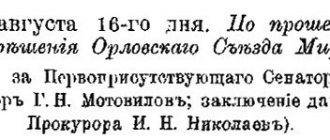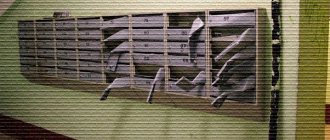The Supreme Court clarified the procedure for holding people accountable for damaging land
The Judicial Collegium for Economic Disputes of the Supreme Court of the Russian Federation issued Ruling No. 306-ES20-16219 in the case of recovery from a business company for damage caused to the soil of a land plot during the construction of a road leading to a sand pit.
In August 2021, the senior inspector of the state land supervision department of the Rosselkhoznadzor department for the Saratov region drew up a protocol on an administrative violation. From the document it followed that no agricultural work was being carried out on the land plot overgrown with weeds and that a road used to travel to the neighboring plot where a sand quarry was located passed through it. Soil samples taken by the inspector indicated that the land in the first area was contaminated.
VAM-Riko LLC, which was previously engaged in road construction, was found guilty of pollution by production waste (crushed stone and asphalt chips), which was fined 40 thousand rubles. according to Part 2 of Art. 8.6 Code of Administrative Offenses of the Russian Federation (“Damage of land”). Since the company subsequently refused to compensate for the damage caused to the soil as a result of blocking the fertile layer, the Rosselkhoznadzor Office filed a lawsuit to recover 1.4 million rubles. The plaintiff also asked the court to oblige the company, within two months from the date of entry into force of the court decision, to develop a land reclamation project and carry it out, and after that provide confirmation of the work performed.
Three courts satisfied the requirements, additionally collecting a state duty from the defendant in excess of 27 thousand rubles. During the consideration of the case, the courts came to the conclusion to recover compensation for damage calculated on the basis of the Methodology for calculating the amount of damage caused to soils as an object of environmental protection. At the same time, they rejected the society's arguments about violations of the sampling procedure.
In a cassation appeal to the Supreme Court, the VAM-Rico society referred to the violation by the courts of substantive and procedural law and asked to send the case for a new trial to the court of first instance.
After studying the materials of case No. A57-8748/2019, the Supreme Court recalled that the norms of environmental legislation on compensation for environmental damage are applied in compliance with the rules established by the general rules of civil law governing compensation for damage (including non-contractual harm). Proof of such losses is carried out in the general manner established by Art. 15, 1064 of the Civil Code of the Russian Federation, from the provisions of which it follows that in order to impose civil liability for causing harm, it is necessary to establish a set of conditions: the presence of harm, the illegality of the behavior of the harm-doer, the guilt of the latter and the causal relationship between the unlawful behavior and the harmful consequences that have occurred. In the absence of at least one of the above elements, the application of civil liability measures to the offender is not allowed.
Responsibility for applying inscriptions and drawings on the walls of buildings and structures
Painting various kinds of inscriptions and drawings on the walls of houses is a manifestation of hooliganism and vandalism. Any writing on the wall is illegal unless permission has been obtained from the owner.
Graffiti artists and those who are fond of writing various inscriptions on walls cause financial damage to both building owners and the city budget with their creativity. Clearing houses of unauthorized inscriptions and drawings costs Barnaul a tidy sum, which could be spent on useful citywide needs.
Due to the high public danger of vandalism, both administrative and criminal liability have been established for unauthorized art, and the line between a criminal offense and an administrative offense is very arbitrary.
In connection with the increasing incidence of offenses in this area, the administration of the city of Barnaul reminds of the responsibility provided for by the current legislation of the Russian Federation.
Administrative responsibility
(upon reaching the age of 16 years)
According to Article 7.17 of the Code of the Russian Federation on Administrative Offenses
(hereinafter referred to as the Code of Administrative Offenses of the Russian Federation), destruction or damage to someone else’s property, if these actions did not result in significant damage, entails the imposition of an administrative fine in the amount of three hundred to five hundred rubles.
It should be noted that significant damage to a citizen is determined taking into account his property status, but cannot be less than two thousand five hundred rubles.
In accordance with Part 1 of Article 20.1 of the Code of Administrative Offenses of the Russian Federation
, petty hooliganism, that is, a violation of public order, expressing clear disrespect for society, accompanied by the destruction or damage of someone else’s property, entails an administrative fine in the amount of five hundred to one thousand rubles or administrative arrest for up to fifteen days.
The same actions associated with disobedience to the lawful demand of a government representative or a person performing duties to protect public order or suppress a violation of public order (Part 2 of Article 20.1 of the Code of Administrative Offenses of the Russian Federation)
shall entail the imposition of an administrative fine in the amount of one thousand to two thousand five hundred rubles or administrative arrest for a term of up to fifteen days.
If facts of propaganda or public
display of Nazi paraphernalia or symbols, or paraphernalia or symbols that are confusingly similar to Nazi paraphernalia or symbols, or paraphernalia or symbols of extremist organizations, or other paraphernalia or symbols, the propaganda or public display of which is prohibited by federal laws, in accordance with
Part 1 of Article 20.3 The Code of Administrative Offenses of the Russian Federation
provides for administrative liability in the form of imposing an administrative fine on citizens in the amount of one thousand to two thousand rubles with confiscation of the subject of the administrative offense or administrative arrest for up to fifteen days with confiscation of the subject of the administrative offense.
In accordance with Article 20.3.1 of the Code of Administrative Offenses of the Russian Federation
, actions aimed at inciting hatred or enmity, as well as humiliating the dignity of a person or group of persons on the basis of gender, race, nationality, language, origin, attitude to religion, as well as belonging to any social group, committed
in public
(and inscriptions in public places refers to public actions), if these actions do not contain a criminal offense, entail the imposition of an administrative fine on citizens in the amount of ten thousand to twenty thousand rubles, or compulsory work for up to one hundred hours, or administrative arrest for up to fifteen days.
Criminal liability
(upon reaching the age of 14 years)
According to Part 1
of Article 214 of the Criminal Code of the Russian Federation
(hereinafter referred to as the Criminal Code of the Russian Federation), vandalism, that is, desecration of buildings or other structures, damage to property on public transport or in other public places, is punishable by a fine in the amount up to forty thousand rubles or in the amount of wages or other income of the convicted person for a period of up to three months, or by compulsory labor for a period of up to three hundred and sixty hours, or by corrective labor for a period of up to one year, or by arrest for a period of up to three months.
At the same time, the same acts committed by a group of persons, as well as for reasons of political, ideological, racial, national or religious hatred or enmity, or for reasons of hatred or enmity against any social group, as provided for in Part 2 of Article 214 of the Criminal Code of the Russian Federation
, are punishable by restriction of freedom for a term of up to three years, or forced labor for a term of up to three years, or imprisonment for the same term.
Criminal liability
(upon reaching the age of 16 years)
According to Article 280 of the Criminal Code of the Russian Federation
,
public
calls for extremist activities, in particular, by applying them to the walls of buildings and structures, are punishable by a fine in the amount of one hundred thousand to three hundred thousand rubles or in the amount of the wages or other income of the convicted person for a period of one to two years, or forced labor for a term of up to three years, or arrest for a term of four to six months, or imprisonment for a term of up to four years.
In accordance with Part 1 of Article 282 of the Criminal Code of the Russian Federation
, for committing actions aimed at inciting hatred or enmity, as well as humiliating the dignity of a person or group of persons on the basis of gender, race, nationality, language, origin, attitude to religion, as well as belonging to any social group, committed in
public
by a person after he is brought to administrative responsibility for a similar act within one year, punishment is provided in the form of a fine in the amount of three hundred thousand to five hundred thousand rubles or in the amount of wages or other income of the convicted person for a period of two to three years, or forced labor for a period from one year to four years, or imprisonment for a term of two to five years.
At first glance, it may seem that the above articles (Part 1 of Article 20.3, Article 20.3.1 of the Code of Administrative Offenses of the Russian Federation; Article 280, Part 1 of Article 282 of the Criminal Code of the Russian Federation)
they have nothing to do with persons illegally and illegally engaged in applying inscriptions and drawings on buildings and structures of the city.
However, it is not. If the drawing or inscription contains the slightest hint of extremism, incitement to hatred, enmity on the grounds of gender, race, nationality, language, origin, attitude to religion, then when qualifying the actions of the guilty person, the relevant articles of the Criminal Code of the Russian Federation or the Code of the Russian Federation will be applied about administrative offenses from the above list.
It should also be noted that for minors who have committed the above crimes or administrative offenses, but have not reached the age of 14 or 16 years, respectively, by virtue of Part 1 of Article 1073 of the Civil Code of the Russian Federation, for harm caused to minors who have not reached the age of criminal prosecution or administrative responsibility, his parents (adoptive parents) or guardians are responsible
who will bear administrative liability in accordance with the provisions of
Part 1 of Article 5.35 of the Code of Administrative Offenses of the Russian Federation
“Failure to fulfill or improper performance of educational duties shall entail a warning or a fine in the amount of one hundred to five hundred rubles” in the form of a warning or an administrative fine in the amount of one hundred to five hundred rubles .
Article 7.17. Destruction or damage to someone else's property
Resolution of the Supreme Court of the Russian Federation dated 07/05/2019 N 38-AD19-4 Judge of the Supreme Court of the Russian Federation V.P. Merkulov, having considered the complaint of Vyacheslav Aleksandrovich Tyurikov against the decision of the magistrate of judicial district No. 3 of the Aleksinsky judicial district of the Tula region dated October 29 that entered into legal force 2018 (hereinafter the day the resolution was issued in full), the decision of the judge of the Aleksinsky City Court of the Tula Region dated November 26, 2021 and the decision of the Deputy Chairman of the Tula Regional Court dated February 27, 2021, issued in relation to Vyacheslav Aleksandrovich Tyurikov in the case about an administrative offense provided for in Article 7.17 of the Code of the Russian Federation on Administrative Offences,
Appeal ruling of the Judicial Collegium for Administrative Cases of the Supreme Court of the Russian Federation dated March 15, 2017 N 10-APG17-1
In addition, the court of first instance reasonably considered that Articles 6.3, 6.4, 7.17, 8.26 and 10.6 of the Code of Administrative Offenses of the Russian Federation provide for administrative liability for violation of legislation in the field of ensuring the sanitary and epidemiological welfare of the population and violation of veterinary and sanitary rules. Contrary to the arguments of the appeal, Resolution of the State Construction Committee of the Russian Federation of September 27, 2003 N 170 “On approval of the Rules and Standards for the Technical Operation of the Housing Stock” is a normative legal act that is generally binding and subject to application throughout the Russian Federation.
Appeal ruling of the Judicial Collegium for Administrative Cases of the Supreme Court of the Russian Federation dated September 19, 2018 N 46-APG18-22
Article 4.11 of the contested Law provides for administrative liability in the form of a fine for carrying out excavation work in violation of the procedure established by municipal legal acts, except for actions provided for in Articles 6.3, 6.4, 7.1, 7.14, 7.17, 8.1, 8.7, 8.8, 9.4, 11.21 of the Code of the Russian Federation about administrative offenses.
Appeal ruling of the Judicial Collegium for Administrative Cases of the Supreme Court of the Russian Federation dated November 21, 2018 N 81-APG18-20
As can be seen from the rules of improvement of municipalities examined by the court, they contain a very wide range of requirements for the appearance (design) of the facades of buildings, structures and structures, their content; all these requirements are essentially an abstract compilation of sets of federal rules and standards applied in carrying out improvement activities, violation of a number of which may be qualified, for example, under Articles 7.13, 7.14.2 of the Code of Administrative Offenses of the Russian Federation (violation of the requirements of legislation on the protection of cultural heritage sites); Article 7.17 of the Code of Administrative Offenses of the Russian Federation (destruction or damage to someone else’s property), Article 7.22 of the Code of Administrative Offenses of the Russian Federation (violation of the rules for maintaining residential buildings and residential premises); Article 7.23.3 of the Code of Administrative Offenses of the Russian Federation (violation by organizations and individual entrepreneurs carrying out business activities in managing apartment buildings of the rules for carrying out business activities in managing apartment buildings); Article 14.3 of the Code of Administrative Offenses of the Russian Federation (violation of advertising legislation); Article 7.24 of the Code of Administrative Offenses of the Russian Federation (use of a non-residential property located in federal ownership in violation of established norms and operating rules); Article 20.4 (placement of banners and banners in violation of fire safety rules).
Resolution of the Supreme Court of the Russian Federation dated May 15, 2017 N 58-AD17-5
Judge of the Supreme Court of the Russian Federation S.B. Nikiforov, having considered the complaint of A.A. Kulakov. on the decision of the magistrate of judicial district No. 39 of the Leninsky district of Komsomolsk-on-Amur, Khabarovsk Territory dated June 3, 2016, the decision of the judge of the Leninsky district court of Komsomolsk-on-Amur, Khabarovsk Territory dated July 26, 2021 and the resolution that entered into legal force Acting Deputy Chairman of the Khabarovsk Regional Court dated November 24, 2021, issued against A.A. Kulakov. (hereinafter - Kulakov A.A.) in the case of an administrative offense under Article 7.17 of the Code of the Russian Federation on Administrative Offenses,
Resolution of the Supreme Court of the Russian Federation dated December 24, 2019 N 53-AD19-9
Judge of the Supreme Court of the Russian Federation S.B. Nikiforov, having considered the complaint of the victim Natalya Aleksandrovna Shalamova against the decision of the magistrate of judicial district No. 27 in Zheleznogorsk, Krasnoyarsk Territory, dated November 14, 2018, which entered into legal force (hereinafter the day the resolution was made in in full), the decision of the judge of the Zheleznogorsk City Court of the Krasnoyarsk Territory dated February 11, 2021 and the resolution of the Deputy Chairman of the Krasnoyarsk Regional Court dated August 1, 2019, issued against Vladimir Andreevich Sokolov in the case of an administrative offense under Article 7.17 of the Code of the Russian Federation on administrative offenses,
Determination of the Judicial Collegium for Civil Cases of the Supreme Court of the Russian Federation dated 03/09/2021 N 18-KG20-120-K4
By the decision of the magistrate of judicial district N 112 of Tuapse dated September 5, 2021 Brynza R.I. found guilty of committing an administrative offense under Article 7.17 of the Code of the Russian Federation on Administrative Offenses (deliberate destruction or damage to someone else's property, if these actions did not cause significant damage), he was given a fine of 300 rubles.
Appeal ruling of the Judicial Collegium for Administrative Cases of the Supreme Court of the Russian Federation dated September 26, 2018 N 19-APG18-7
The arguments of the appeal about the improper legal assessment by the court of first instance of the fact that failure to comply with the provisions of Part 6 of Article 53 and Parts 5 and 6 of Article 59 of the Land Improvement Rules containing federal regulations entails administrative liability in accordance with the Law of the Stavropol Territory of April 10 2008 N 20-KZ “On Administrative Offenses in the Stavropol Territory”, despite the fact that such offenses are punishable by Articles 7.14.1, 7.17 and 7.22 of the Code of the Russian Federation on Administrative Offences.




